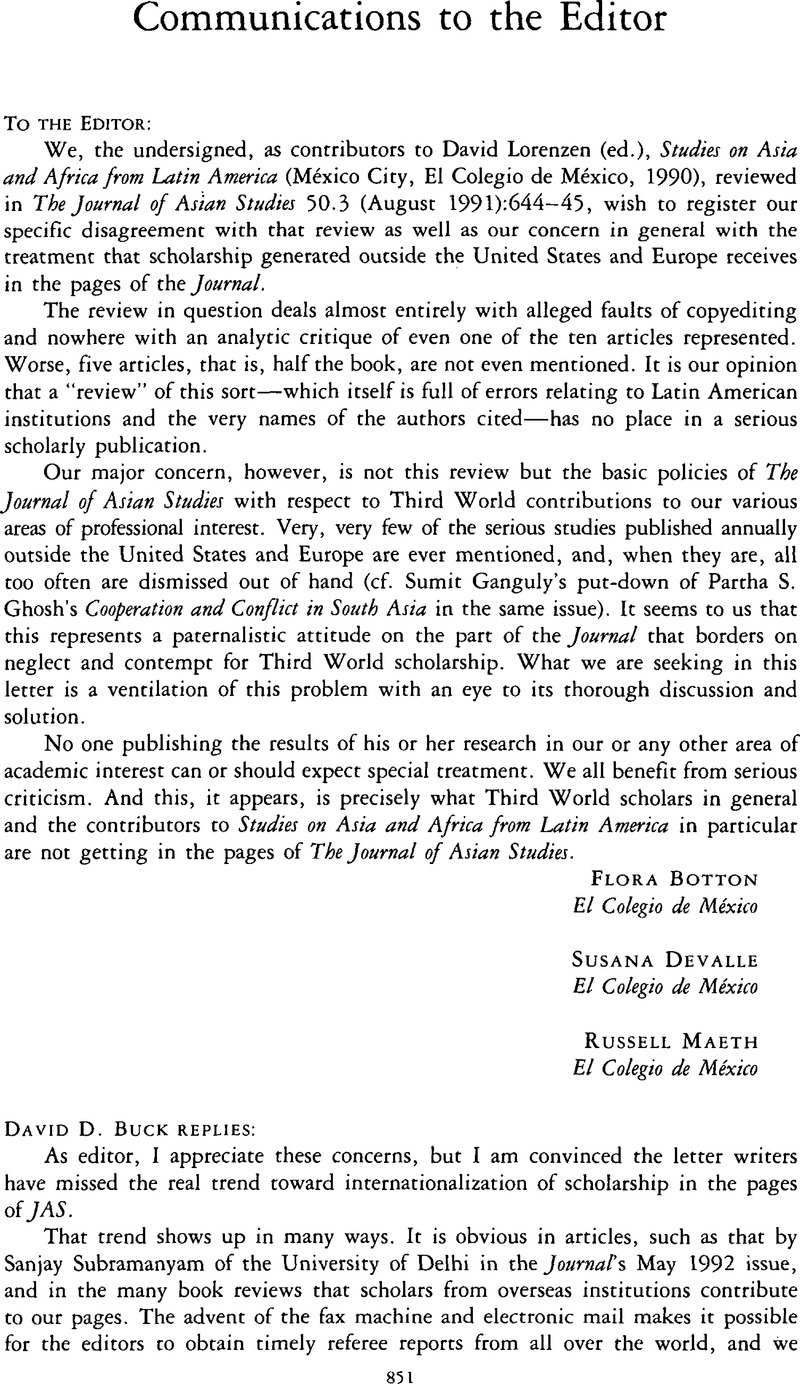No CrossRef data available.
Article contents
Communications to the Editor
Published online by Cambridge University Press: 23 March 2011
Abstract
An abstract is not available for this content so a preview has been provided. As you have access to this content, a full PDF is available via the ‘Save PDF’ action button.

- Type
- Editorial
- Information
- Copyright
- Copyright © The Association for Asian Studies, Inc. 1992
References
List of References
Crawcour, Sydney. 1964. “Notes on Shipping and Trade in Japan and the Ryukyus.” The Journal of Asian Studies 23.3:377-81.CrossRefGoogle Scholar
Crawcour, Sydney. 1966. “Kawamura Zuiken: A Seventeenth Century Entrepreneur.” The Transactions of the Asiatic Society of Japan 9: 28–50.Google Scholar
Flershem, Robert G. 1964. “Some Aspects of Japan Sea Trade in the Tokugawa Period.” The Journal of Asian Studies 23.3:405–16.CrossRefGoogle Scholar
Flershem, Robert G. 1966. “Some Aspects of Japan Sea Shipping and Trade in the Tokugawa Period, 1603–1867.” Proceedings of the American Philosophical Society 110.3:182–226.Google Scholar
Mitsuo., Funabashi 1992. “Kinsei ni okeru kainan no urakata gimmi to sono bōshisaku” [Prevention and investigation of shipwrecks in the Tokugawa Period]. Kaiji shi kenkyū [Marine history research] 49: 50–65.Google Scholar
Howell, David L. 1992. “Proto-Industrial Origins of Japanese Capitalism.” The Journal of Asian Studies 51.2:269–86.CrossRefGoogle Scholar
Ryūshin., Makino 1963. “Kita mae sen tembyō” [Brief account of Hokkai trade route ships]. Hokuriku shigaku [Hokuriku history] 11.12:34–42.Google Scholar
Smith, Thomas C. 1959. The Agrarian Origins of Modern Japan. Stanford: Stanford University Press.Google Scholar
Kisaburō., Wakabayashi“Kaga-han shoki kaiun shiryō oboe-gaki” [Sources for the Kaga domain’s shipping and trade in the early Tokugawa period]. Chihō shi kenkyū [Local history research] 13.2:34–41.Google Scholar
Wigen, Kären. 1992. “The Geographic Imagination in Early Modern Japanese History: Retrospect and Prospect.” The Journal of Asian Studies 51.1:3–29.CrossRefGoogle Scholar
Heibonsha, , ed., and publisher. 1979ff. Nihon rekishi chimei taikei [Historical gazetteer of Japan], volumes 23 (Aichi-ken) and 24 (Mie-ken).Google Scholar
Masaaki, Murase. 1980. Kinsei Isewan kaiun shi no kenkyū [Research on early modern shipping in the Ise Bay]. Tokyo: Hosei Daigaku Shuppankyoku.Google Scholar
Genichi, Ōnishi. 1931. “Isewan o chūshin to suru kaijō kōtsū” [Maritime transport, with an emphasis on the Ise Bay]. Rekishi chiri 57(4): 146–71.Google Scholar
Takeshi, Toyota and Kota, Kodama, eds. 1969. Taikei Nihon shi sōsho, vol. 13: Ryūtsū shi 1 [An outline of Japanese history, vol. 13: History of circulation (1)]. Tokyo: Yamakawa Shuppan.Google Scholar


